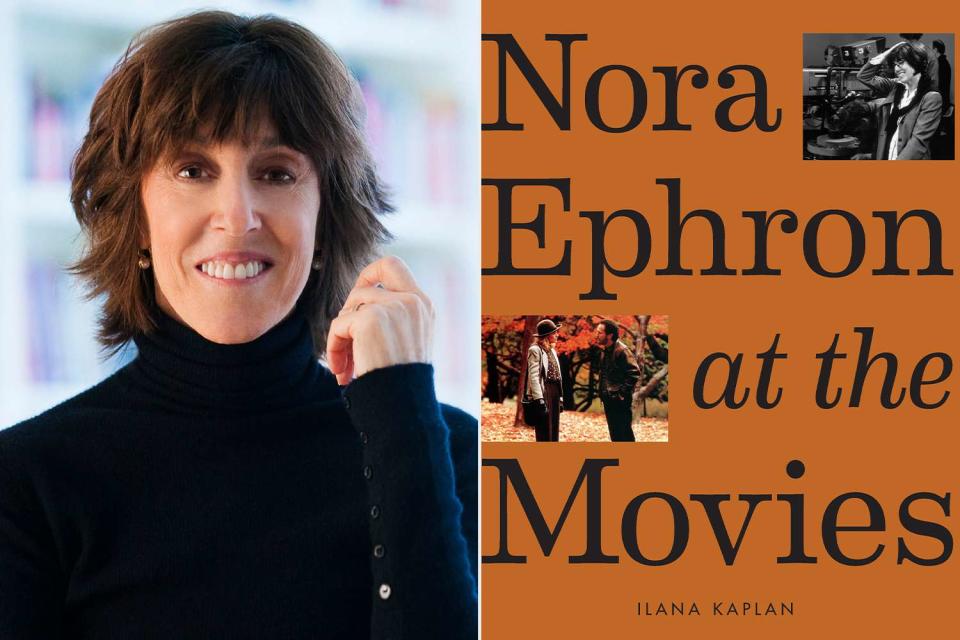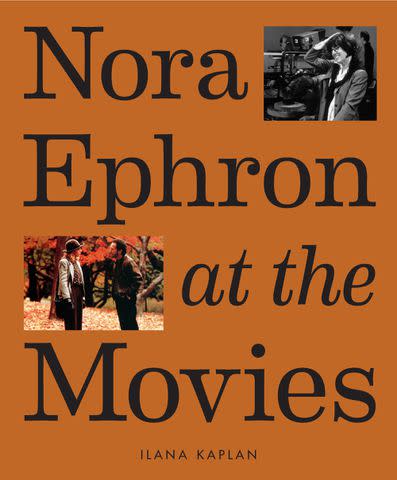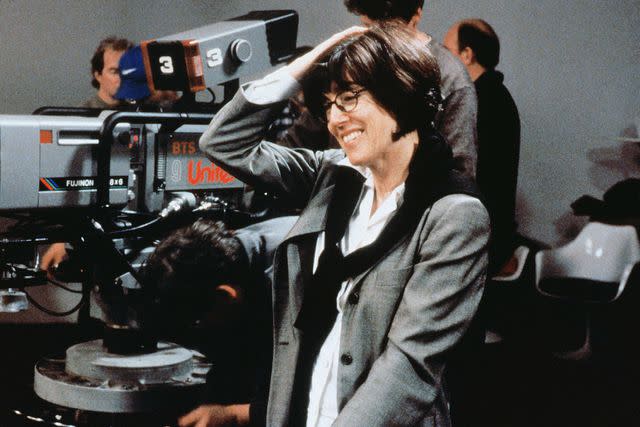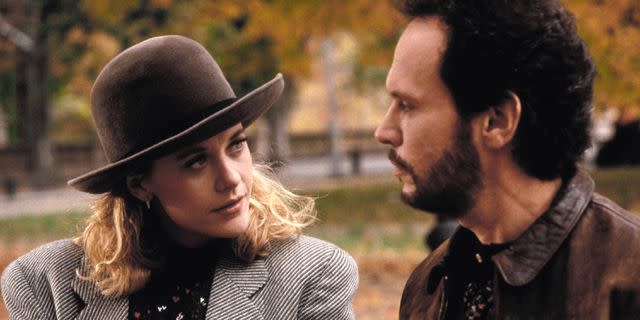“Nora Ephron at the Movies” Explores the Queen of Rom-Com's Outsize Influence: Read an Excerpt Here (Exclusive)
A new book due out this fall features interviews and analysis on the 'When Harry Met Sally' and 'You've Got Mail' trailblazer

Scott McDermott/USA/NBCU Photo Bank via Getty; Abrams
Nora Ephron; Nora Ephron at the MoviesNora Ephron revolutionized the rom-com and now fans and newcomers to her work alike can get a deep dive into just how meaningful her impact on the genre has been.
Nora Ephron at the Movies: A Visual Celebration of the Writer and Director Behind When Harry Met Sally, You've Got Mail, Sleepless in Seattle, and More by Ilana Kaplan, due out this fall from Abrams, details the beloved journalist, essayist, screenwriter, author, producer, director and feminist's life and work.
With a foreword by Jason Diamond, the book pairs detailed criticism with analysis of Ephron's work as a champion of the rom-com and a Hollywood trailblazer. It will also feature exclusive interviews with some of Ephron’s key collaborators, including Andie MacDowell and Jenn Kaytin Robinson, to add color and nuance to her life and legacy.
Below, read an exclusive excerpt from the book that explores how Ephron changed Hollywood forever.

Abrams
'Nora Ephron at the Movies' by Ilana KaplanThink of Nora Ephron as the fairy godmother of modern-day rom-coms. After years of a genre lying in wait, she waved her magic wand and penned dazzling scripts, equivalent to charming ball gowns for women who wouldn’t take any s---. She cast a spell on Hollywood with her charming plots, explosive chemistry and leading questions about destiny and romance.
Nora deserves significant credit for the rom-com boom of the 1990s and early 2000s, which created regular opportunities for women in writing, directing, and producing and created a modern commentary on dating and singledom that connected with audiences.
The widespread critical and commercial success of Nora’s genre-defining film When Harry Met Sally and the “hooker with a heart of gold” vehicle Pretty Woman (directed by Garry Marshall) ushered in a new era for the rom-com.(The former earned a hefty $92.8 million at the box office, while the latter became the biggest rom-com hit in history by total number 1990, per Indiewire).
Its success helped kick off the era. But a rom-com about a prostitute love story wouldn’t have landed on its own. The rom-com renaissance was driven by the quirky “girl next door” types like Meg Ryan and Julia Roberts, the anchors for flawed female heroines and their quippy lines. And Nora continued to build on the success of When Harry Met Sally with 1993’s Sleepless in Seattle and 1998’s You’ve Got Mail—a trio of canonical projects.

Richard Foreman/Dreamworks/Mad Chance/Paramount/Kobal/Shutterstock
Nora Ephron on the set of 'You've Got Mail'Before Nora, the rom-com had a reliable formula: boy meets girl, boy and girl have a conflict and then boy and girl resolve that conflict and live happily ever after, with film flourishes including bombshell leads, surface-level chemistry and predictable humor.
As trends came and went, the rom-com evolved and endured a series of makeovers: the Great Depression was dominated by screwball comedies like His Girl Friday (1940) and The Lady Eve (1941), elevated by Hollywood’s leading stars, such as Cary Grant and Barbara Stanwyck; from the 1950s to the 1960s the rom-com was “radicalized” by the sexual liberation movement and resulted in movies such as The Battle of the Sexes (1960) and Lover Come Back (1961), where the enemies-to-lovers trope ran rampant.
Never miss a story — sign up for PEOPLE's free daily newsletter to stay up-to-date on the best of what PEOPLE has to offer , from celebrity news to compelling human interest stories.
By the 1970s the rom-com formula turned redundant, aside from the introduction of Annie Hall (1977) and Manhattan (1979), which homed in on insecurity, anxiety and bittersweet romances. The 1980s birthed high school rom-coms such as Sixteen Candles and The Breakfast Club, but the allure of rom-coms had largely dissipated at the box office, until Nora ushered in their golden age.
Growing up enamored with Old Hollywood romance flicks such as The Lady Vanishes (1938), An Affair to Remember (1957) and The Apartment (1960) informed Nora’s rom-com framework, but she brought her own personal twists to the genre. She added the neuroses of Woody Allen, quippy dialogue, a sense of nostalgia and real female heroines written through the female gaze.

Alamy
A still from 'When Harry Met Sally'And, as Andrew O’Hehir noted in Salon, “Ephron’s best scripts offered the comfort of an old-fashioned love story in what felt like a fizzy, urbane contemporary setting.”
She uncovered the perfect recipe for building chemistry, often in a gray metropolis such as New York or Seattle. In turn, Nora built a distinct sense of familiarity in all her characters, which made the genre more universally relatable. She made ordinary connections—an email exchange or a voice on a radio show—feel like destiny, quenching audiences’ thirst for old-school Hollywood romance with an added layer of vulnerability and intimacy.
Nora may not have invented the meet-cute, but she sure as hell took the reins and made it her own. With meet-cute after meet-cute in When Harry Met Sally’s vignettes, we all started to believe that love could come from a cross-country road trip or a chance encounter in a bookstore.
Reprinted from Nora Ephron at the Movies: A Visual Celebration of the Writer and Director Behind When Harry Met Sally, You’ve Got Mail, Sleepless in Seattle, and More, published by Abrams. Text copyright ?2024 Ilana Kaplan, Cover ? 2024 Abrams.
Nora Ephron at the Movies will hit shelves on October 29 and is available now, wherever books are sold.
For more People news, make sure to sign up for our newsletter!
Read the original article on People.
Solve the daily Crossword

